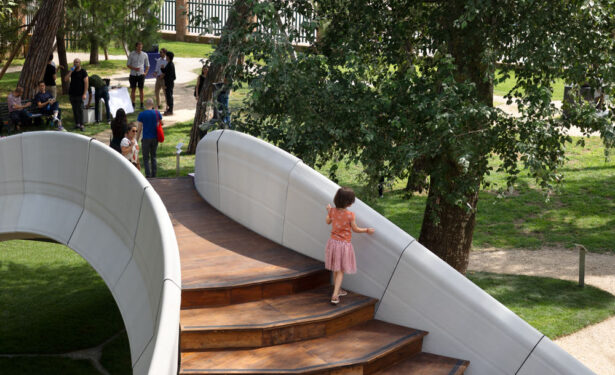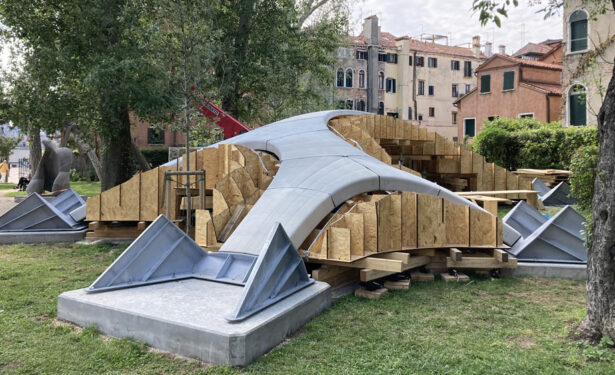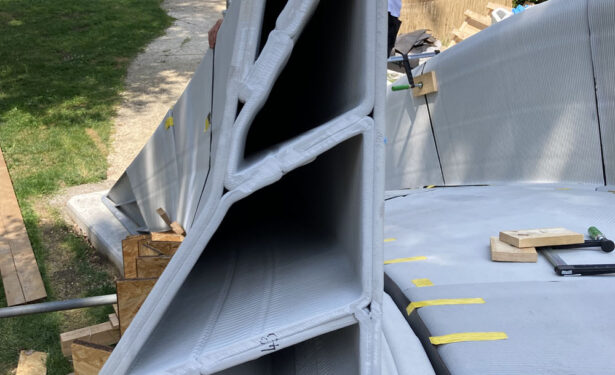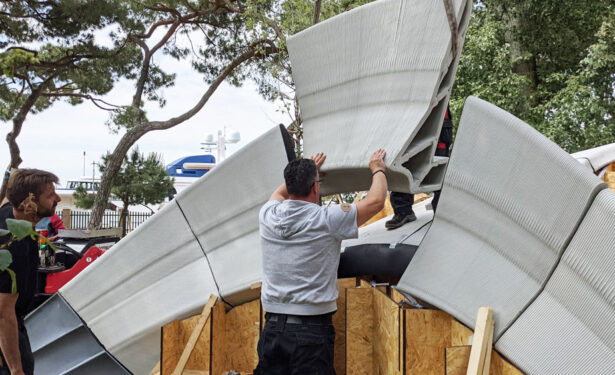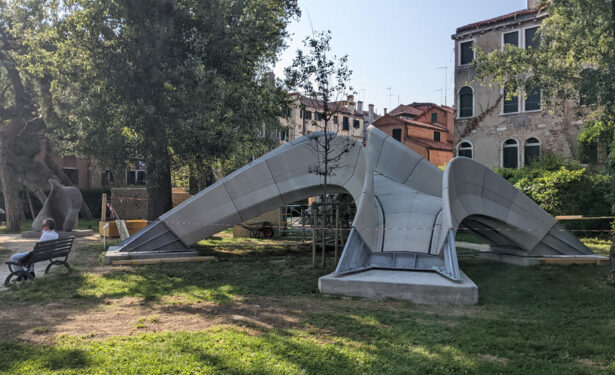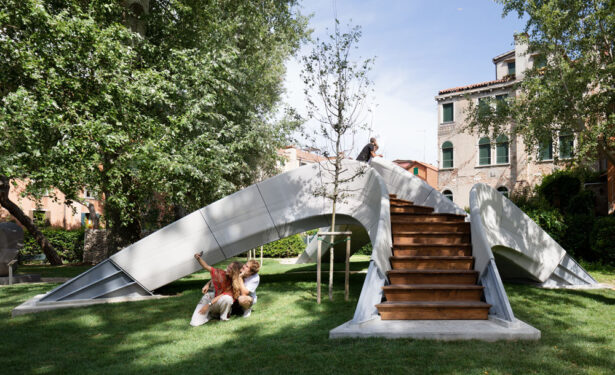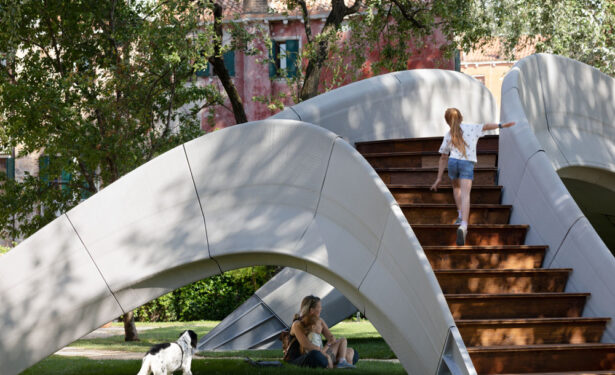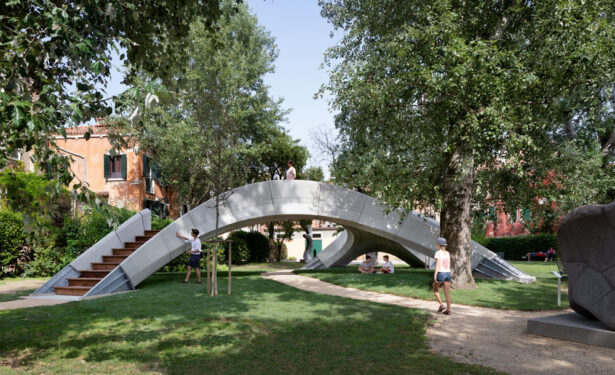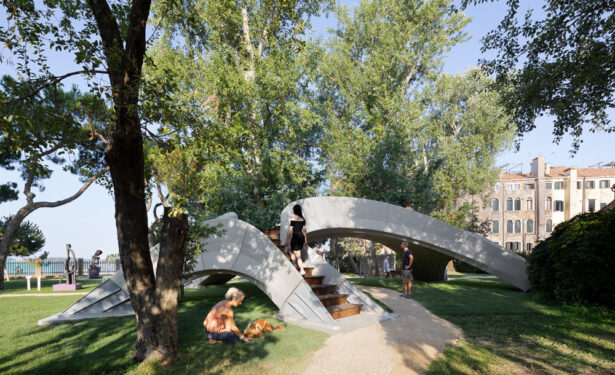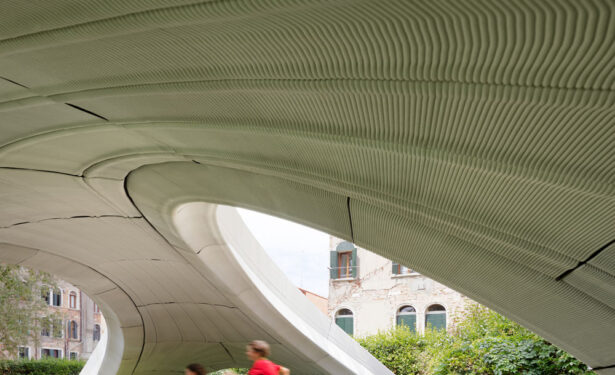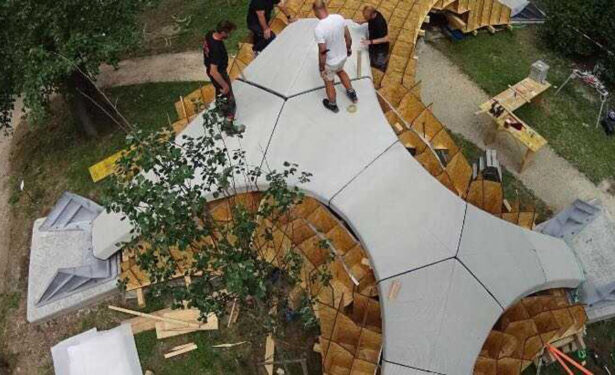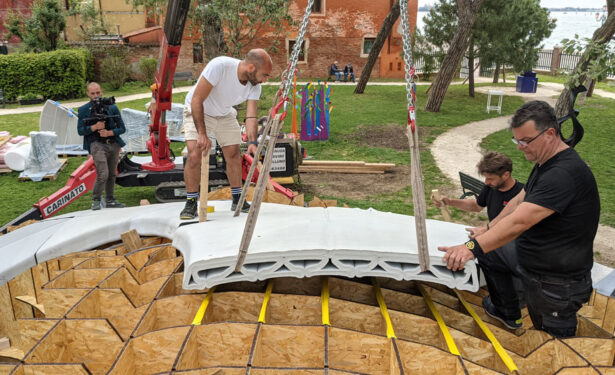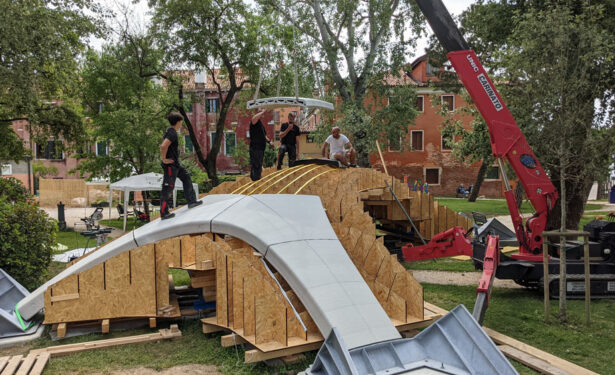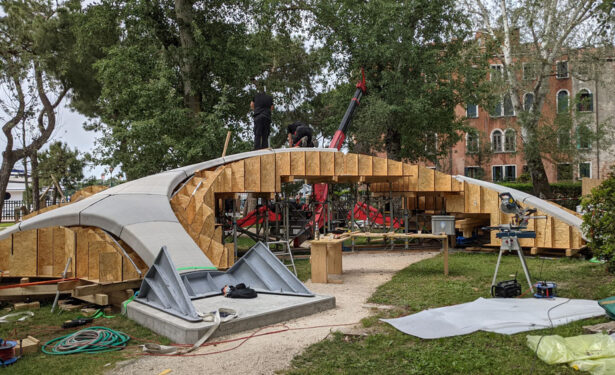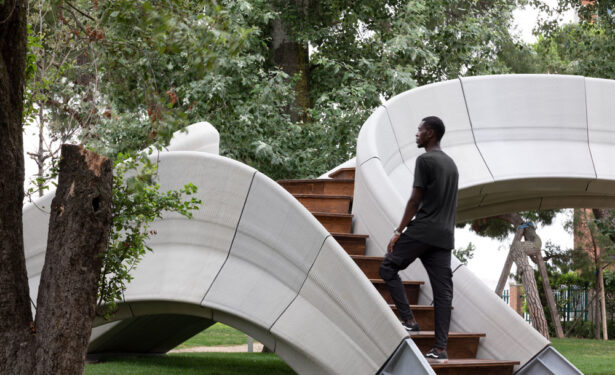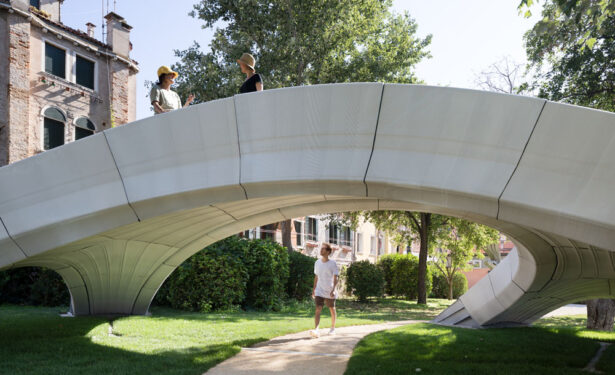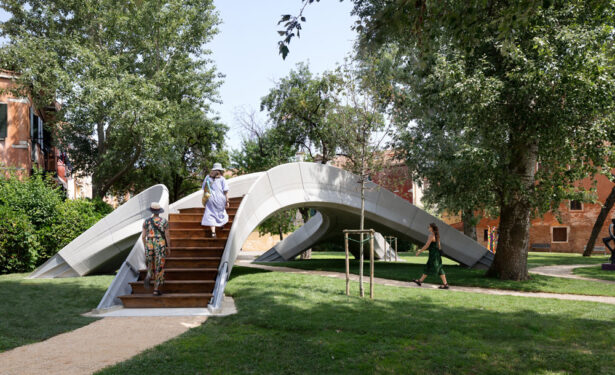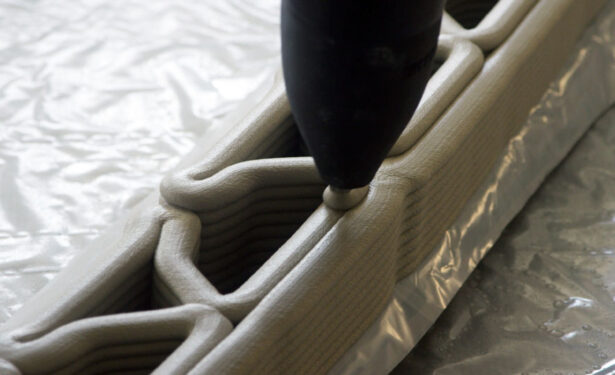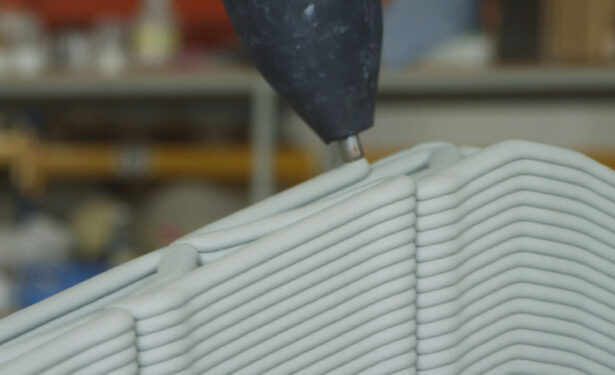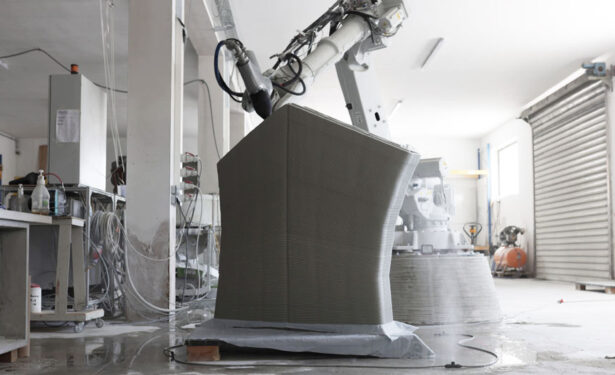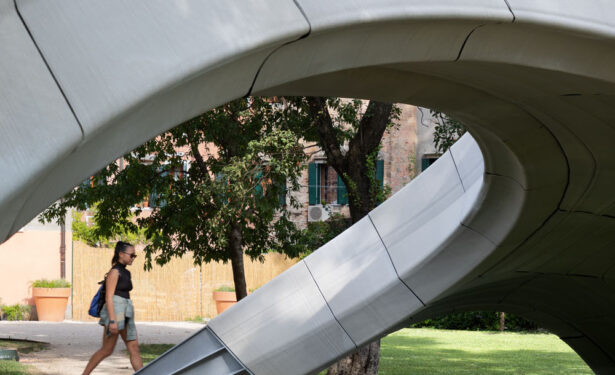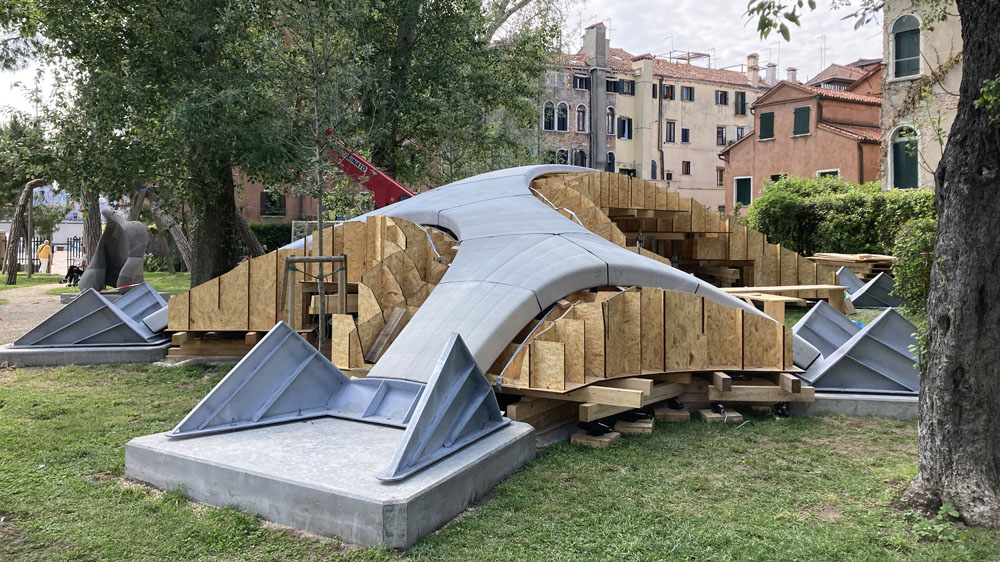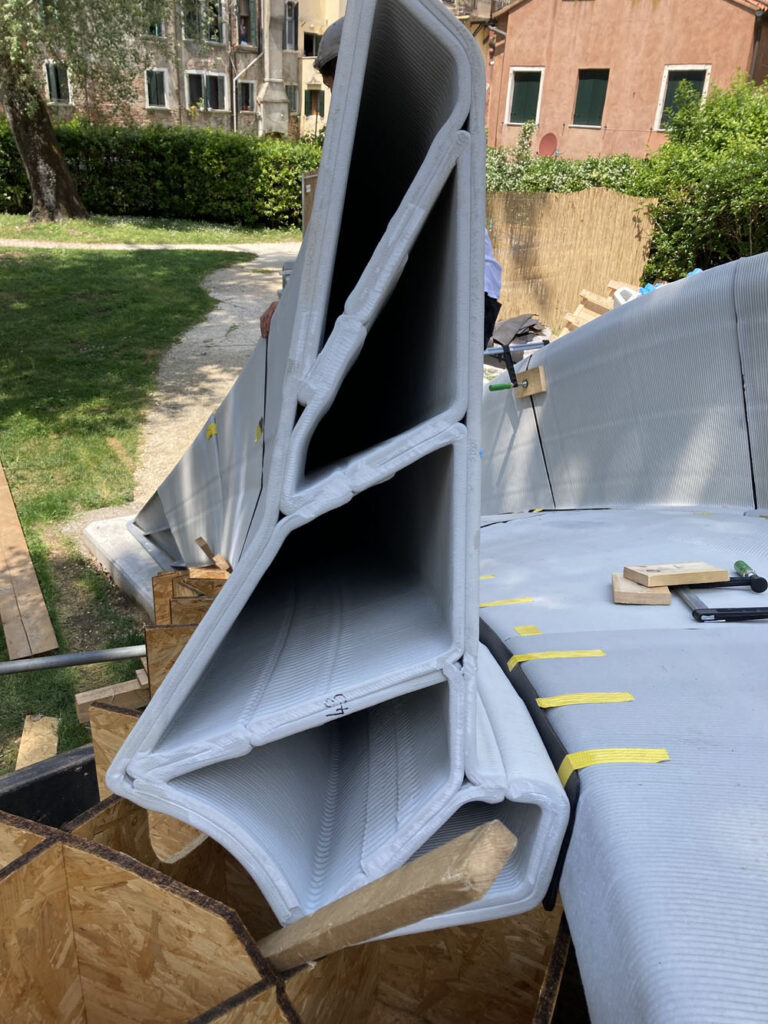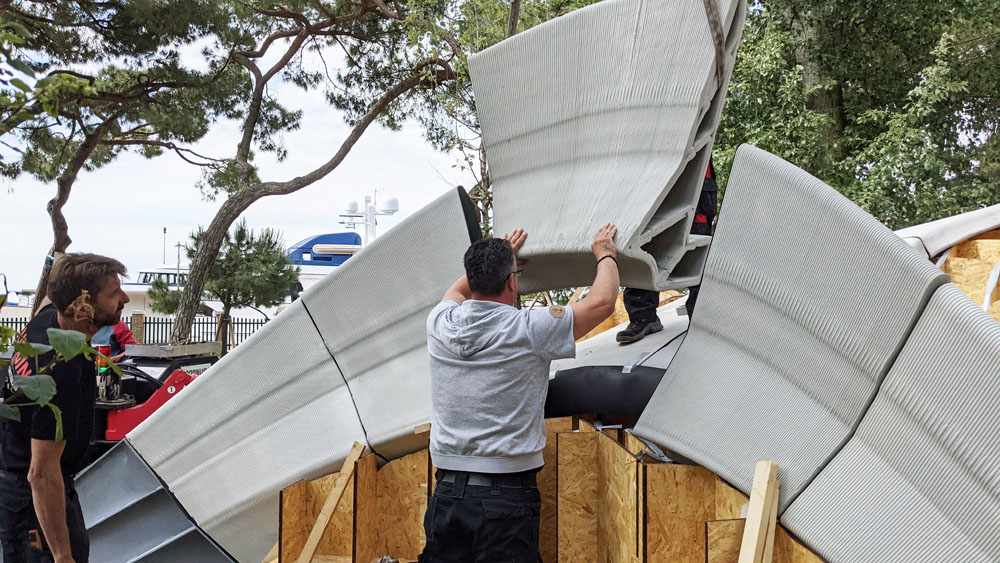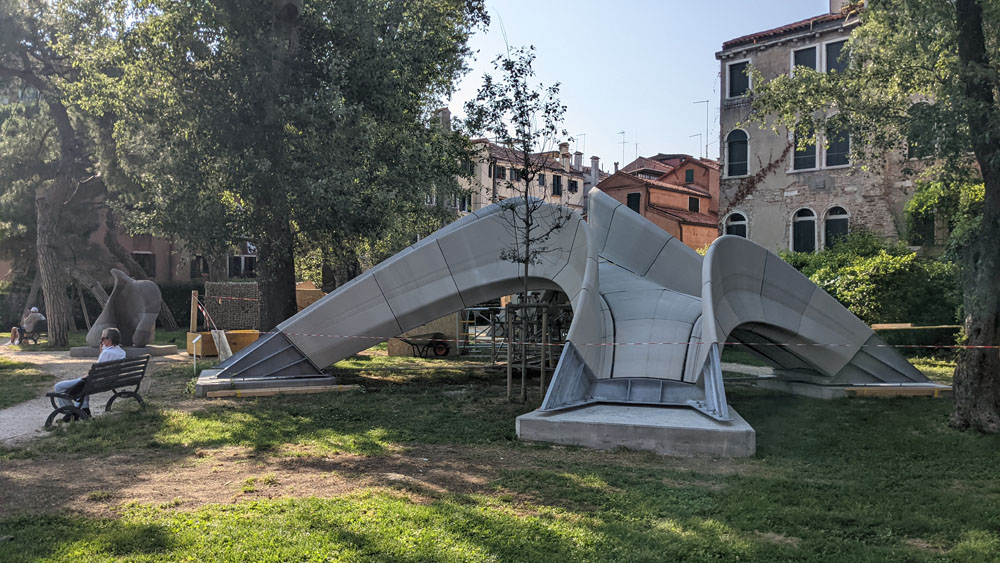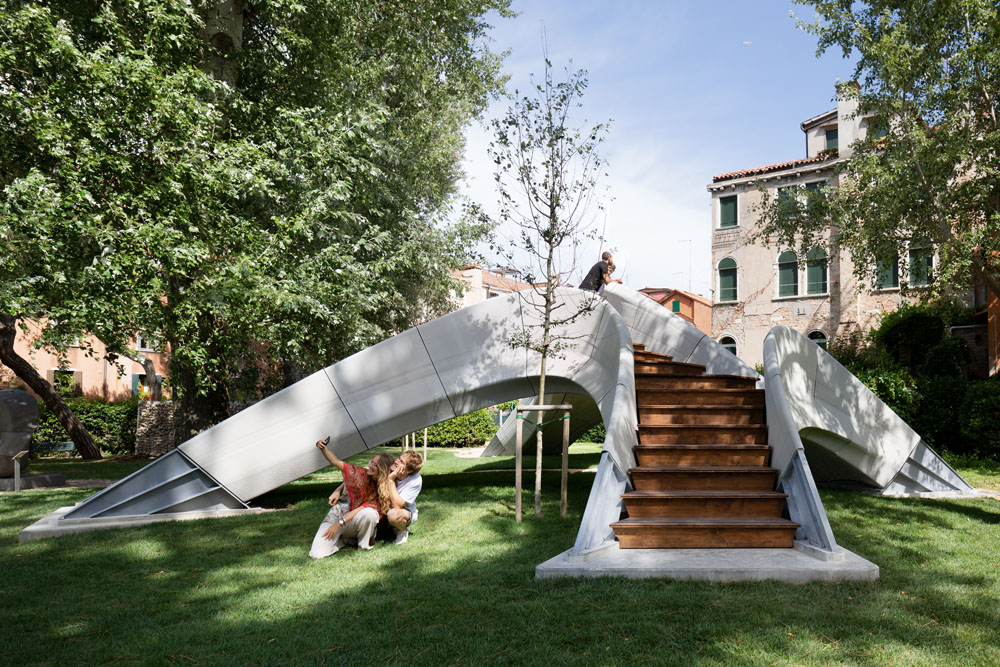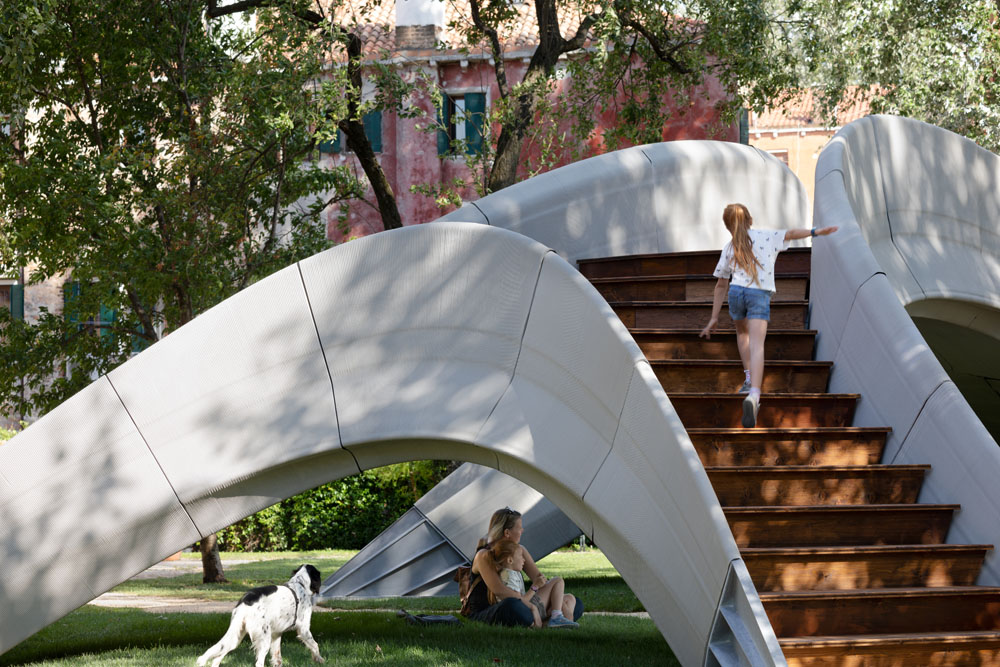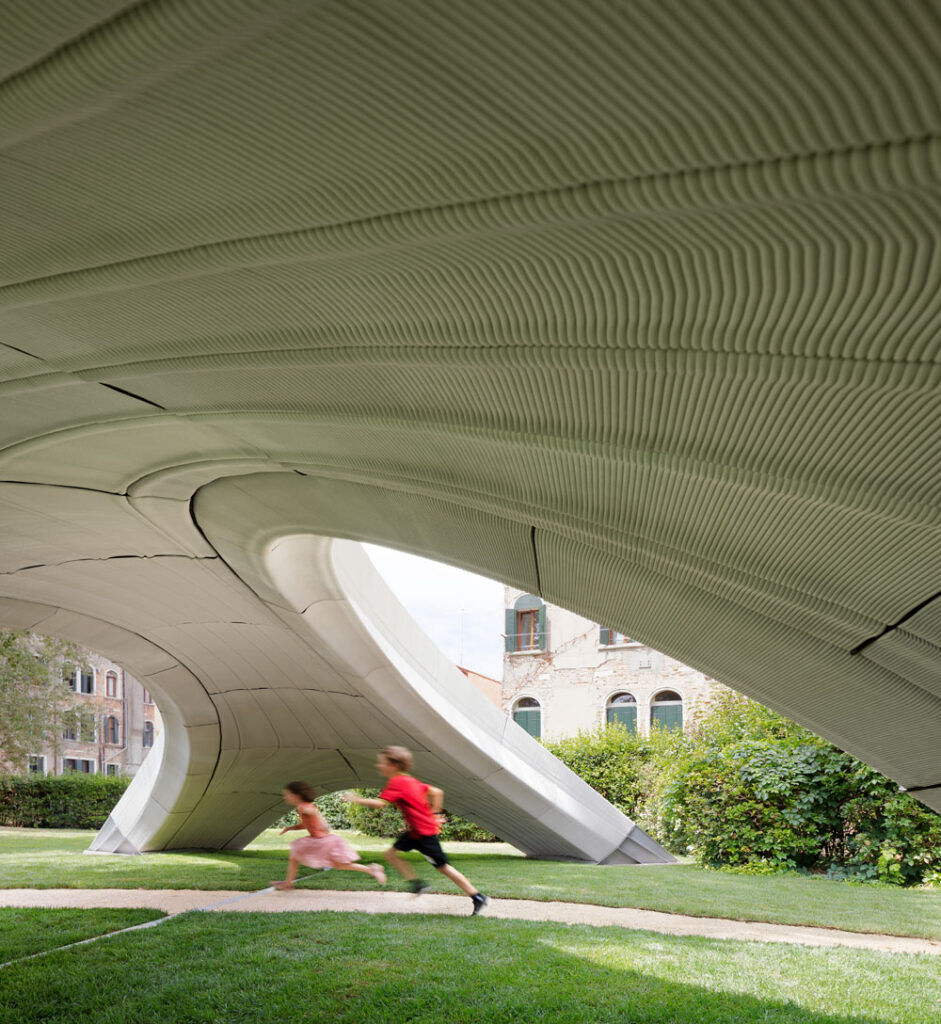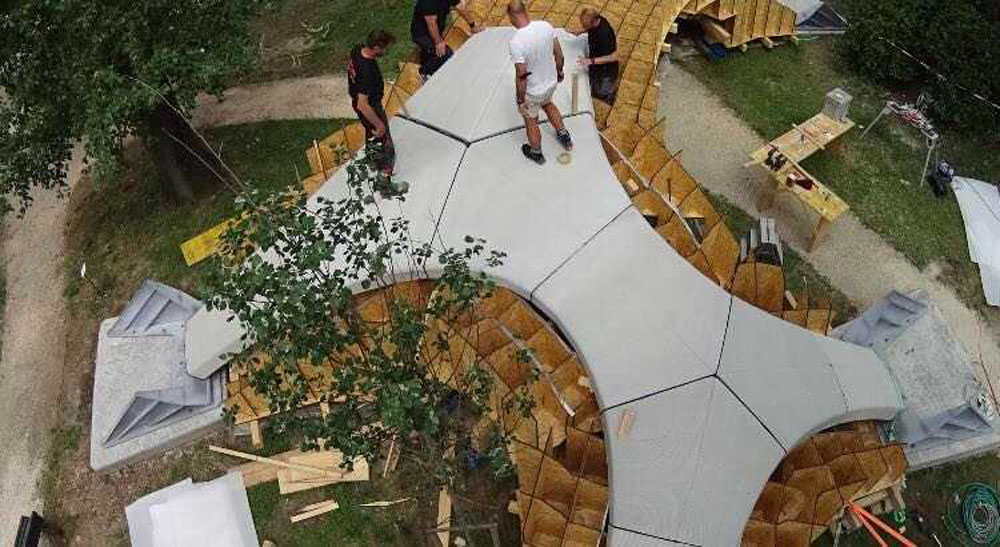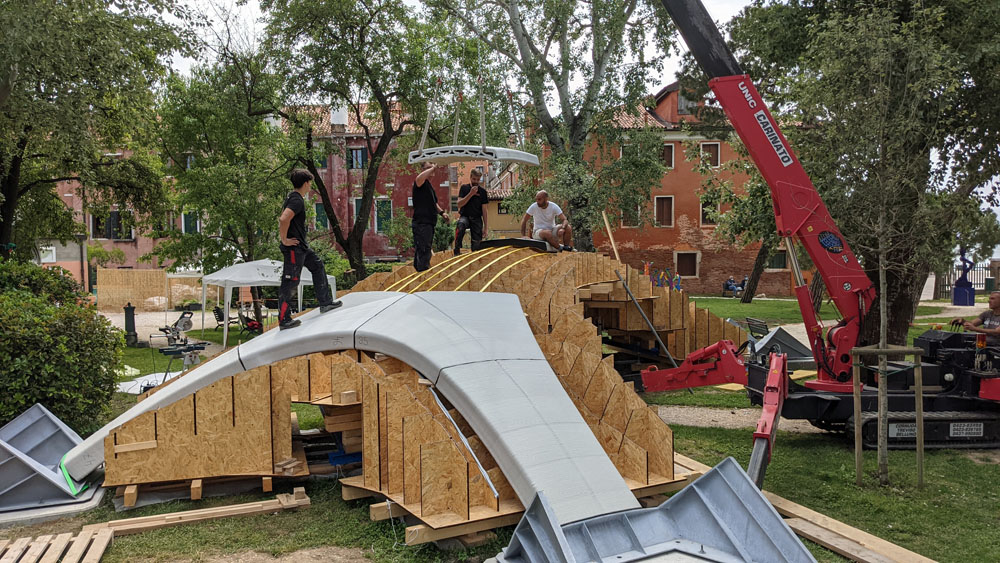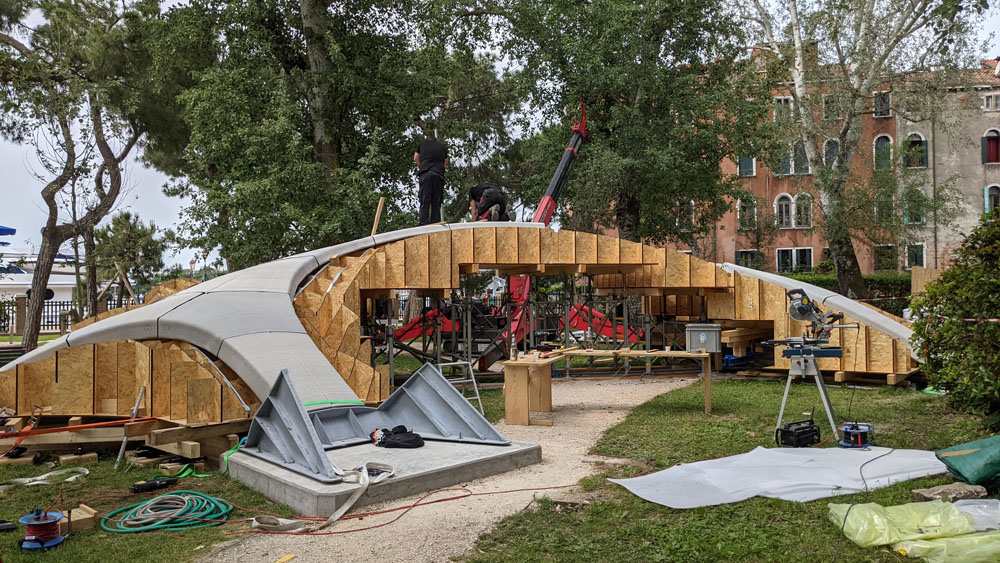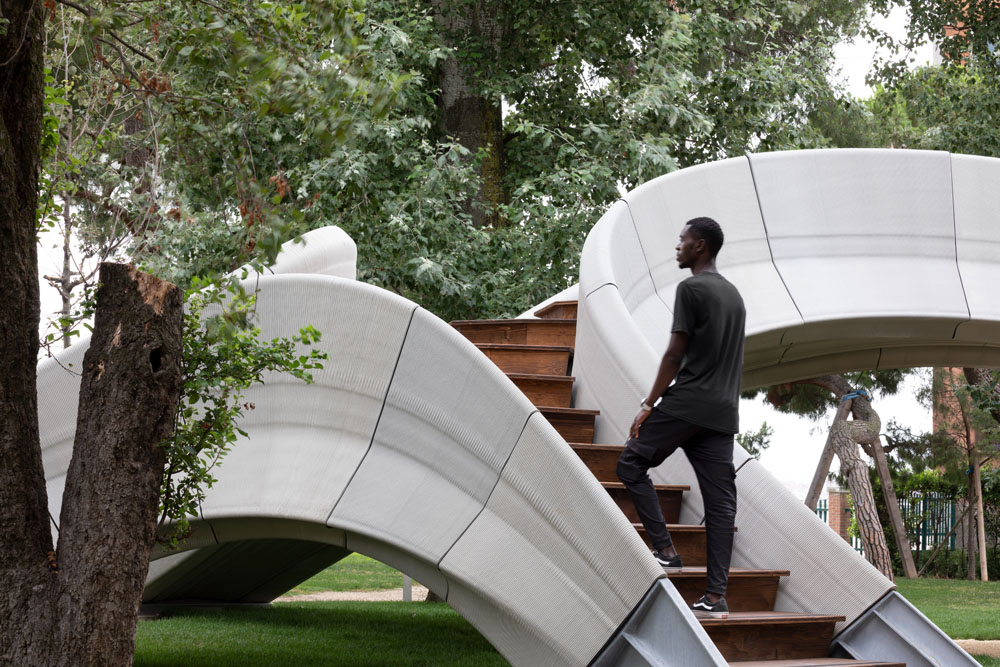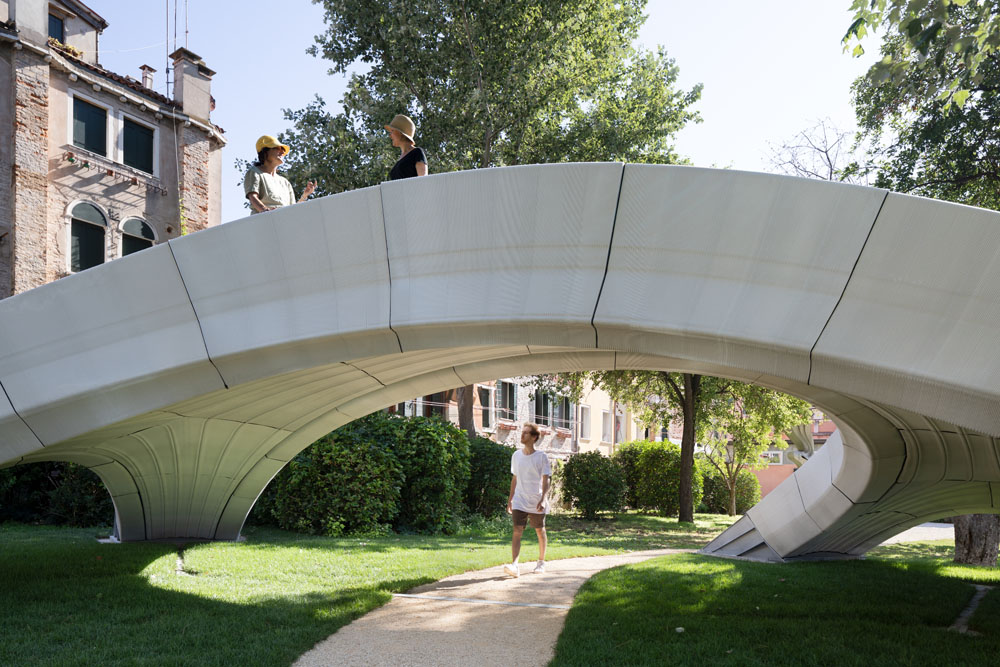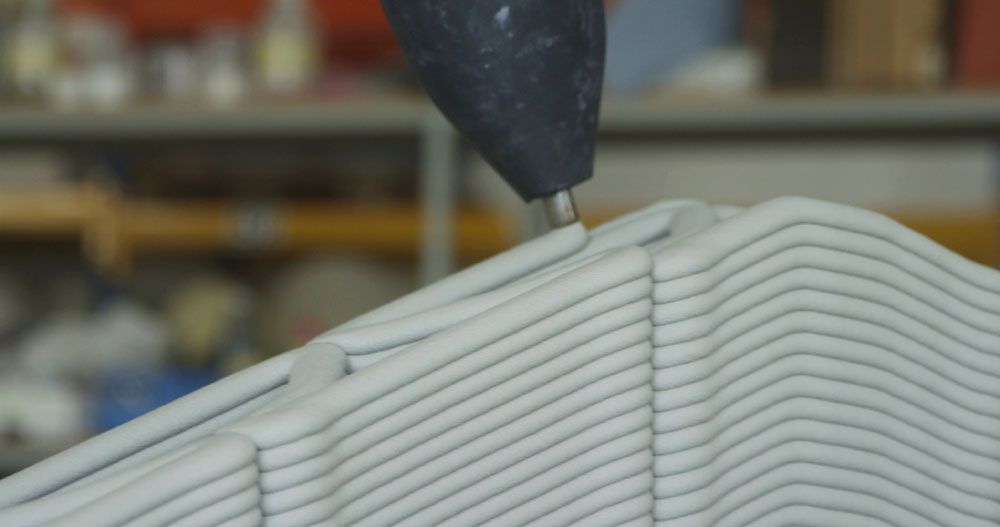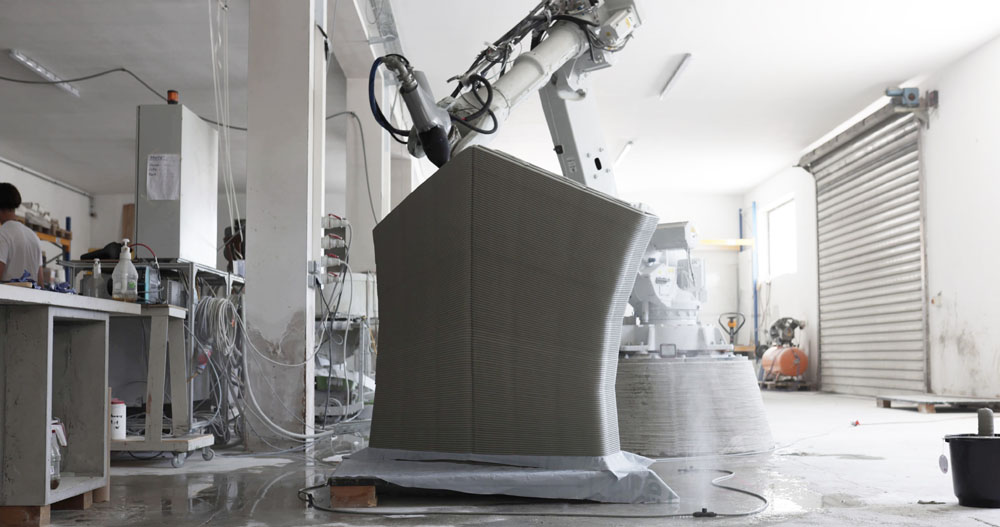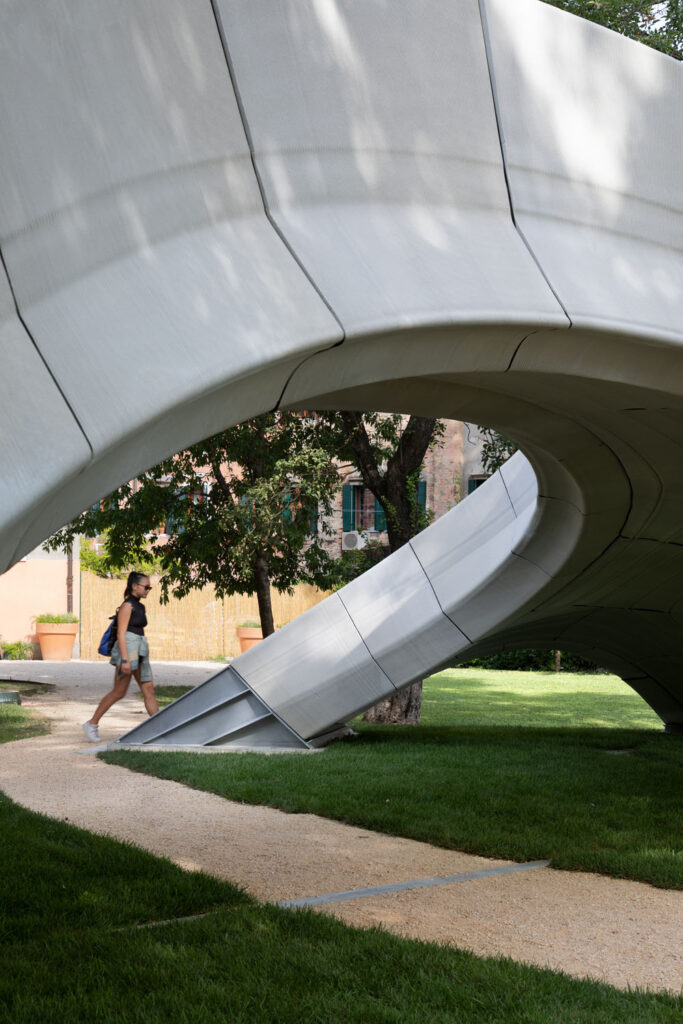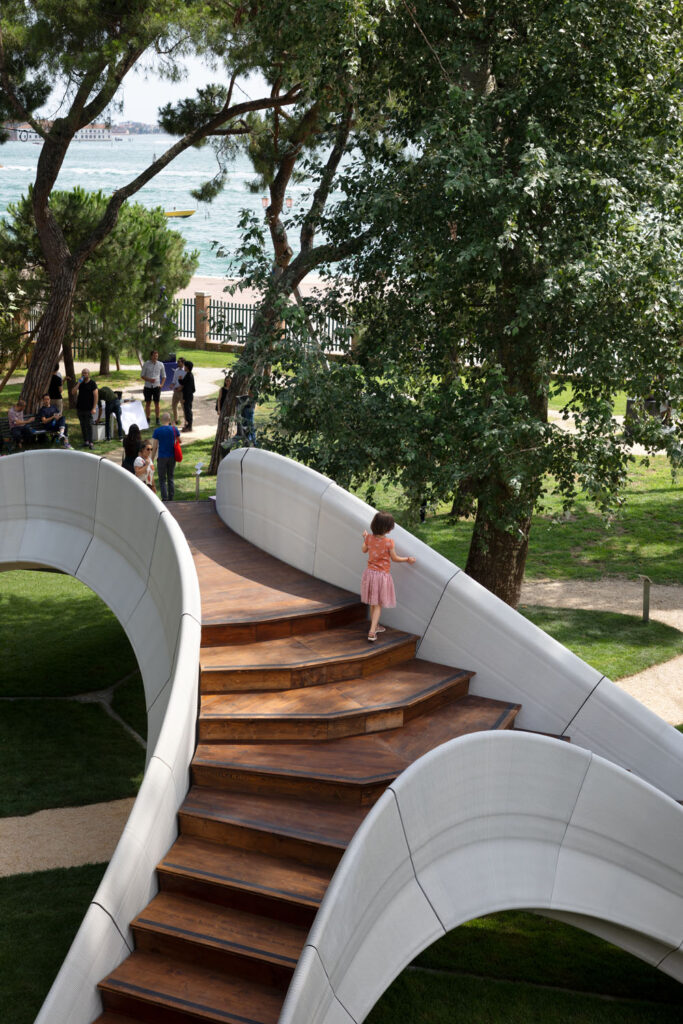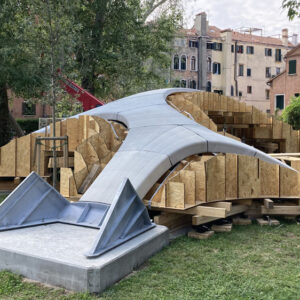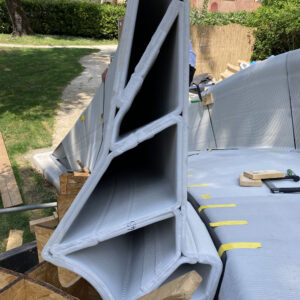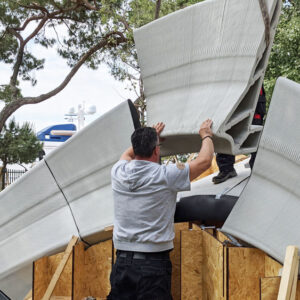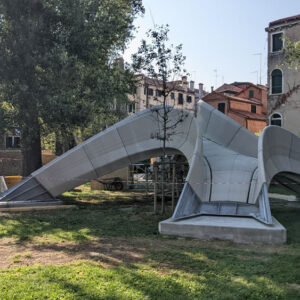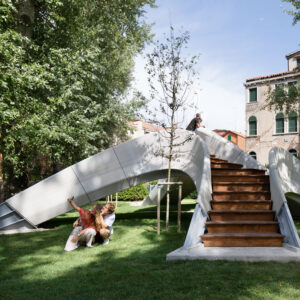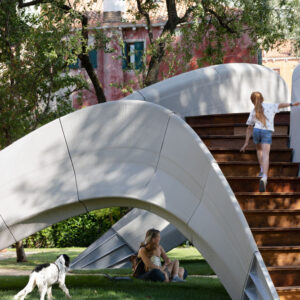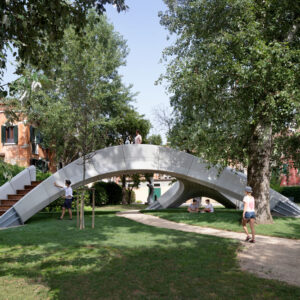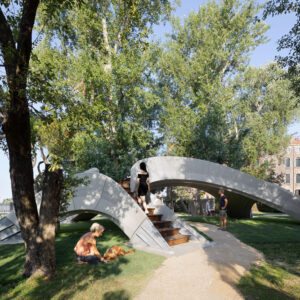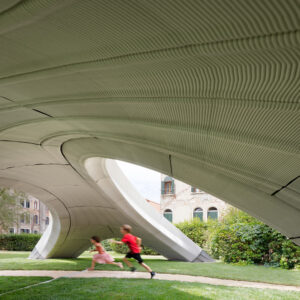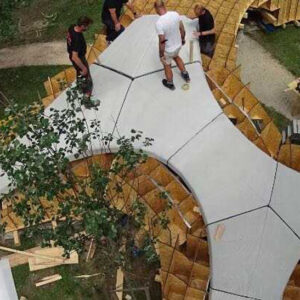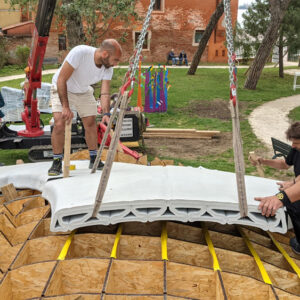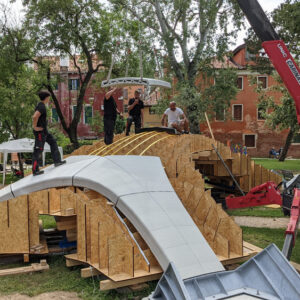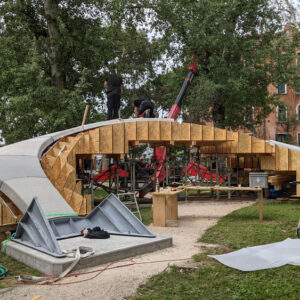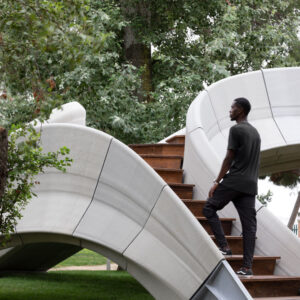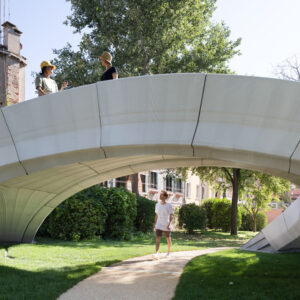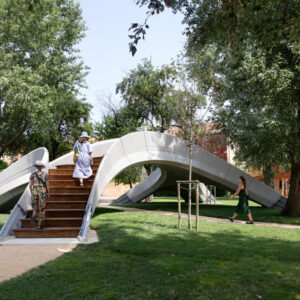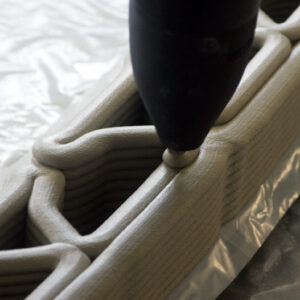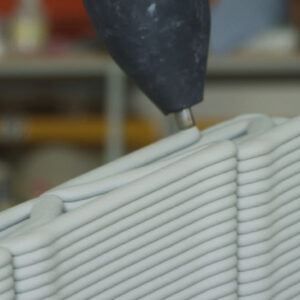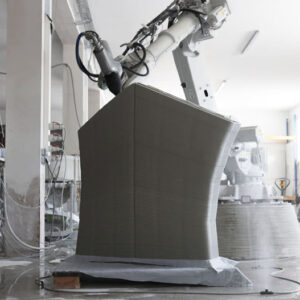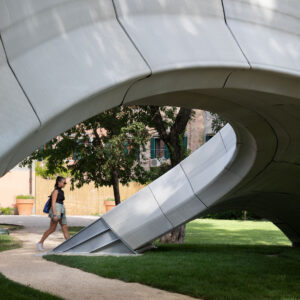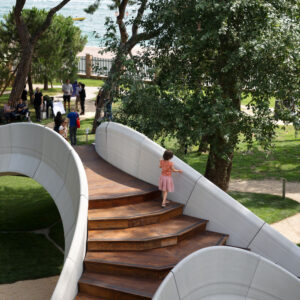- 31 July 2021
- 3820 defa okundu.
Striatus – a first of its kind 3D concrete printed arched bridge – now open
Exhibited at the Giardini della Marinaressa during the Venice Architecture Biennale until November 2021, Striatus has been developed by the Block Research Group (BRG) at ETH Zurich and Zaha Hadid Architects Computation and Design Group (ZHACODE), in collaboration with incremental3D (in3D) and made possible by Holcim.
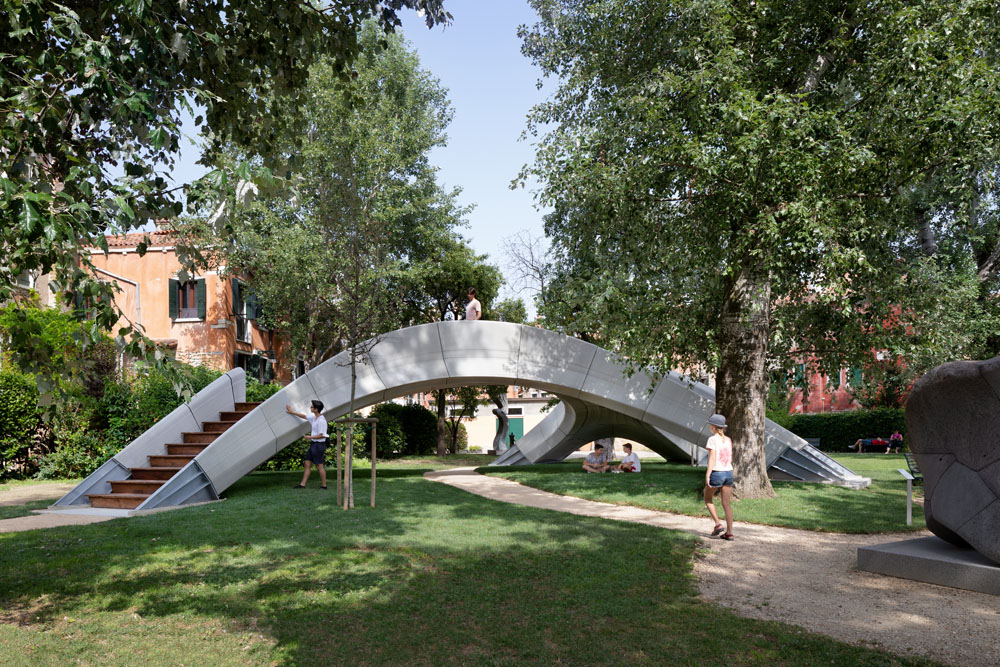
Fotoğraflar: naaro, Tom van Mele, Alessandro Dell’Endice, in3d
Striatus is an arched masonry footbridge composed of 3D-printed concrete blocks assembled without mortar or reinforcement. The 16 x 12 metre footbridge is the first of its kind, combining traditional techniques of master builders with advanced computational design, engineering and robotic manufacturing technologies.
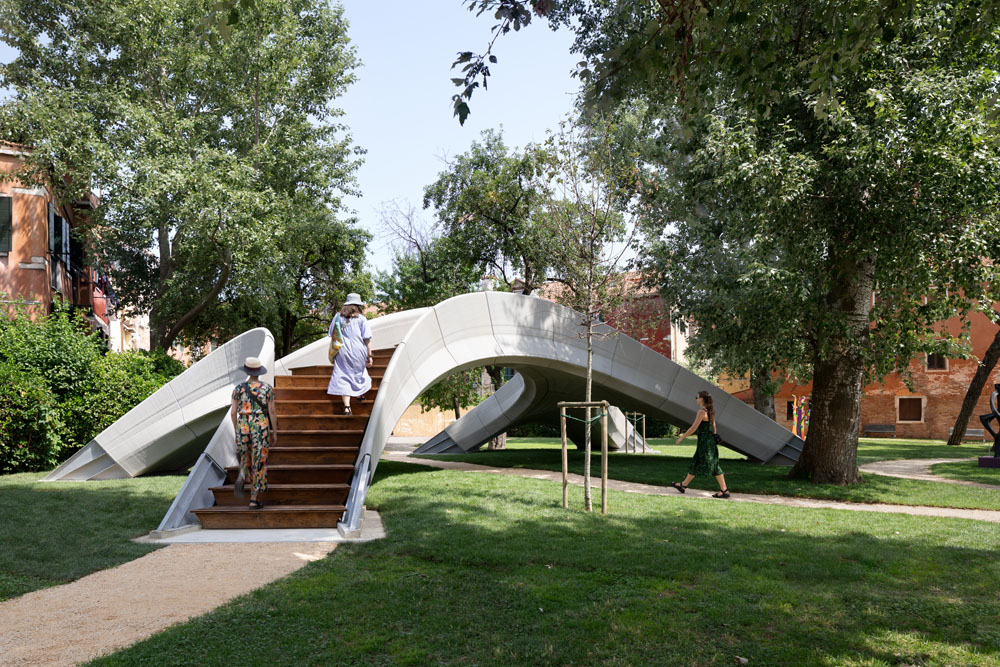
Exhibited at the Giardini della Marinaressa during the Venice Architecture Biennale until November 2021, Striatus has been developed by the Block Research Group (BRG) at ETH Zurich and Zaha Hadid Architects Computation and Design Group (ZHACODE), in collaboration with incremental3D (in3D) and made possible by Holcim.
Proposing a new language for concrete that is structurally informed, fabrication aware, ecologically responsible and precisely placed to build more with less, Striatus optimises the properties of masonry structures, 3D concrete printing (3DCP) and contemporary design; presenting an alternative to traditional concrete construction.

The name “Striatus” reflects its structural logic and fabrication process. Concrete is precisely printed in layers orthogonal to the main structural forces to create a “striated” compression-only structure that requires no mortar or reinforcement.
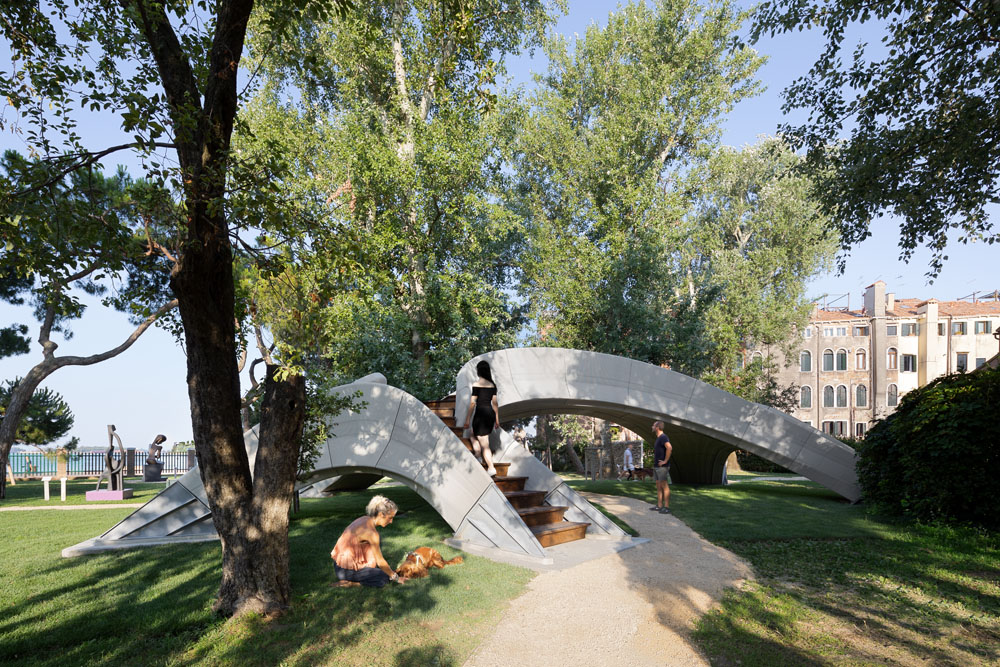
As the construction does not need mortar, the blocks can be dismantled, and the bridge reassembled at different location. If the construction is no longer needed, the materials can simply be separated and recycled.
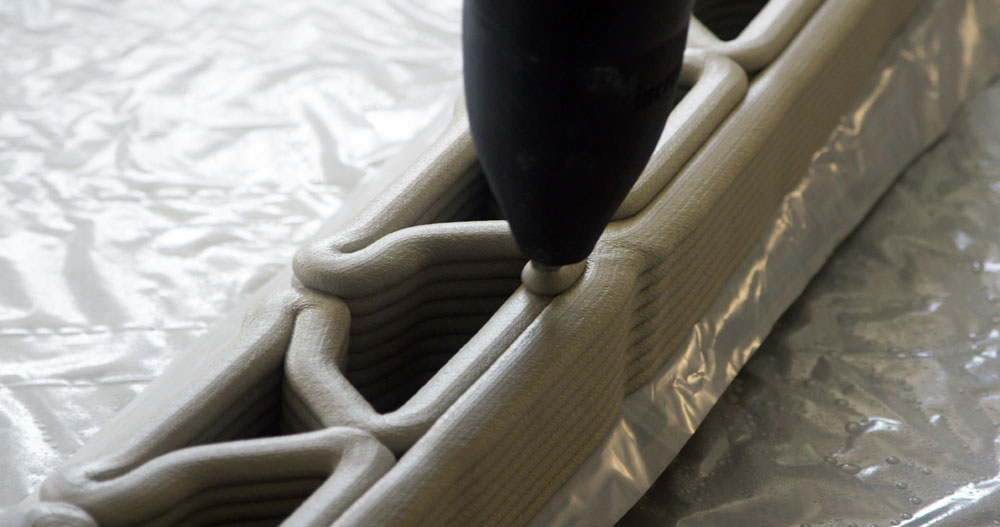
Strength through geometry
Striatus is an unreinforced concrete structure that achieves strength through geometry. Concrete can be considered an artificial stone that performs best in compression. In arched and vaulted structures, material can be placed precisely so that forces can travel to the supports in pure compression. Strength is created through geometry, rather than an inefficient accumulation of materials as in conventional concrete beams and flat floor slabs. This presents opportunities to significantly reduce the amount of material needed to span space as well as the possibility to build with lower-strength, less-polluting alternatives.
Striatus’ bifurcating deck geometry responds to its site conditions. The funicular shape of its structural arches has been defined by limit analysis techniques and equilibrium methods, such as thrust network analysis, originally developed for the structural assessment of historic masonry vaults; its crescent profile encompasses the thrust lines that trace compressive forces through the structure for all loading cases.
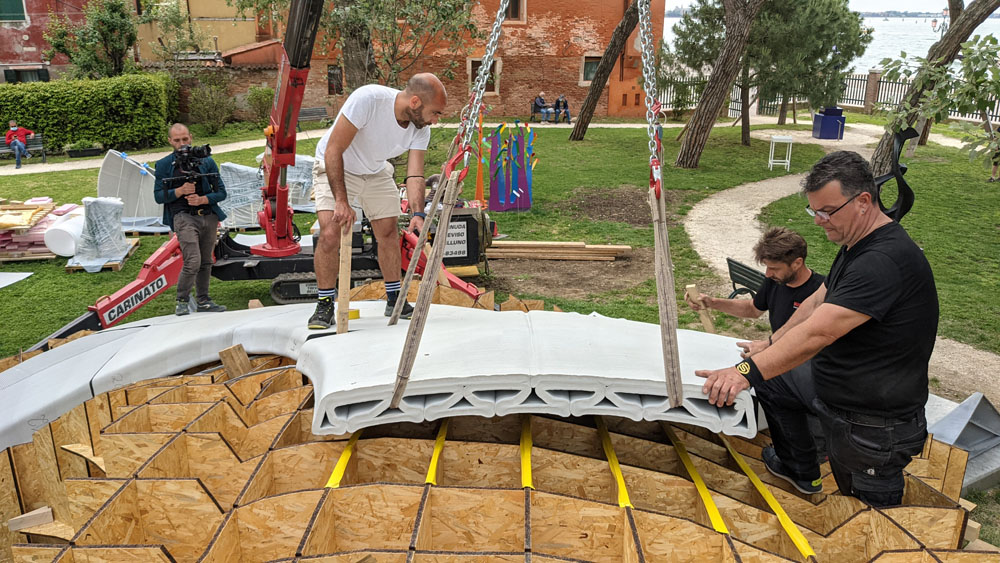
Steel tension ties absorb the horizontal thrust of the arches. Neoprene pads placed in between the dry-assembled blocks avoid stress concentrations and control the friction properties of the interfaces, echoing the use of lead sheets or soft mortar in historical masonry construction.
In plan, the boundaries of the structure form deep arches that transfer horizontal loads (for example, from visitors leaning against the balustrades) to the supports in pure compression. Advanced discrete element modelling (DEM) was used to refine and optimise the blocks’ stereotomy and to check stability of the entire assembly under extreme loading cases or differential settlements of the supports.
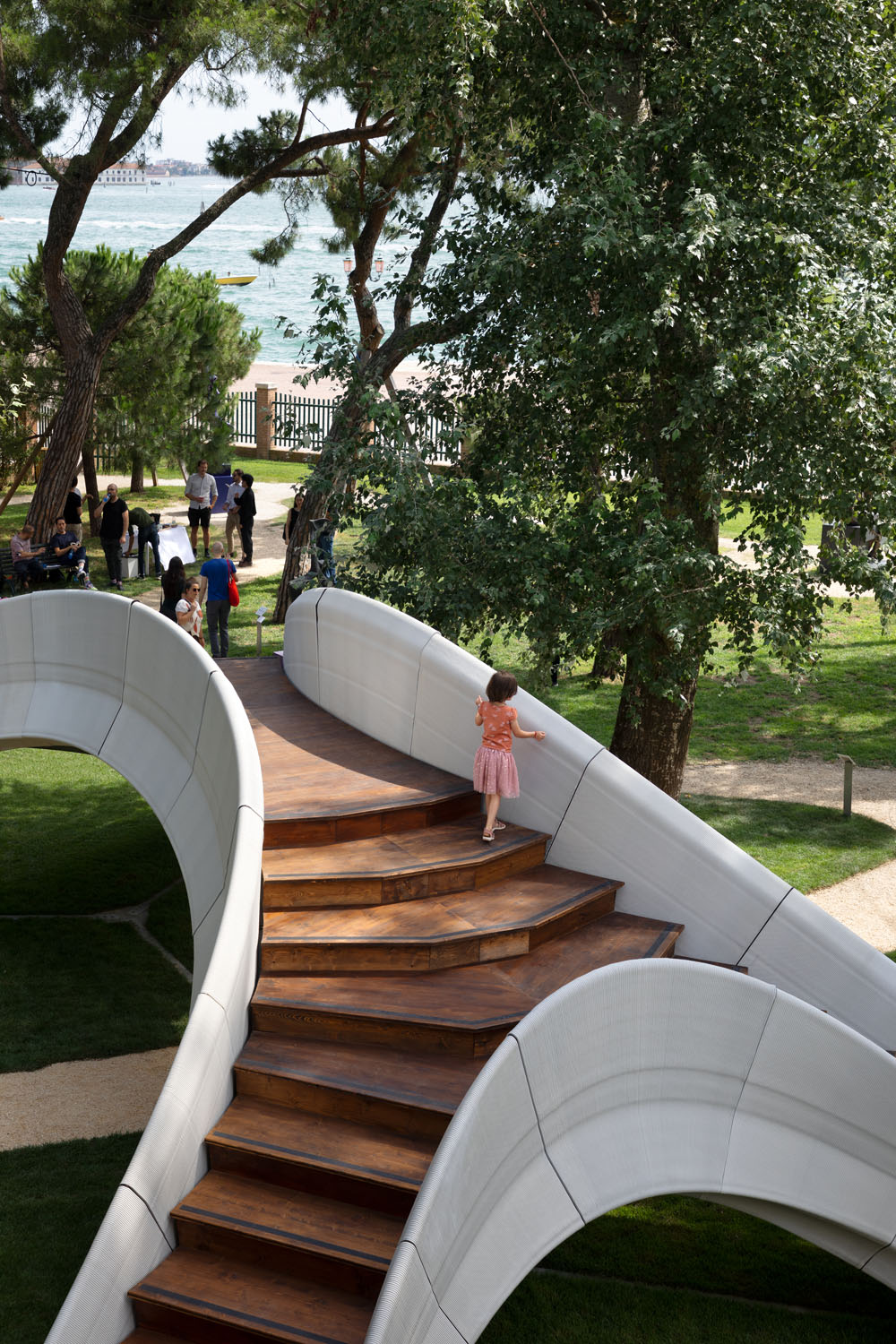
The bridge’s 53 3DCP voussoirs have been produced using non-parallel print layers that are orthogonal to the dominant flow of forces. This avoids delamination between the print layers as they are held together in compression. The additive manufacturing process ensures the structural depth of the components can be achieved without producing blocks with a solid section, hence reducing the amount of material needed compared to subtractive fabrication methods or casting.
Striatus follows masonry structural logic on two levels. As a whole, the bridge behaves as a series of leaning unreinforced voussoir arches, with discretisations orthogonal to the dominant flow of compressive forces, following the same structural principles as arched Roman bridges in stone. Locally, on the level of the voussoir, the 3DCP layers behave as traditional brick masonry evident in the inclined rows of bricks within Nubian or Mexican vaulting.
